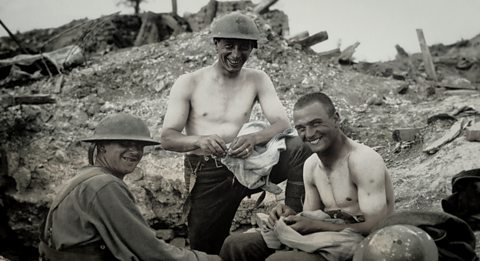Video summary
Returning home could be difficult for soldiers, as they found it difficult to explain what it was really like to go to war.
In 1917, Charles Carrington took part in the Passchendaele offensive as an Acting Captain, and finding himself cut off in a shell hole with his men had to find a way of coping with looming shellshock.
His account also features the other dimensions of officer life: writing letters to the relatives of deceased soldiers and organising new companies ready to go off and fight again.
This is from the series: I Was There: The Great War Interviews.
Teacher viewing recommended prior to use in class.
Teacher Notes
Could be used to explore life in the trenches or to introduce the effects of the battle of Passchendaele.
This clip will be relevant for teaching History at KS3, KS4/GCSE, in England and Wales and Northern Ireland.
Also at Third Level, Fourth Level, National 4 and National 5 in Scotland.
This topic appears in OCR, Edexcel, AQA, WJEC, CCEA GCSE and SQA.
One woman's loss. video
Katie describes what the war was like from a young woman’s perspective in Manchester.

Recruiting soldiers in WW1. video
The different pressures which were applied to persuade young men to join up to fight.

Respite. video
How men could relax and forget about life on the front line when behind the lines and get some respite from the war.

How did shell shock affect soldiers? video
Soldiers from both sides describe their experience of shell fire and the physical and psychological effects it had on them and their colleagues.

The Christmas truce, 1914. video
Henry describes his reaction to being called up and his experiences in the trenches.

The Gallipoli campaign. video
Frank talks about fighting in the disastrous Gallipoli campaign in 1915.
